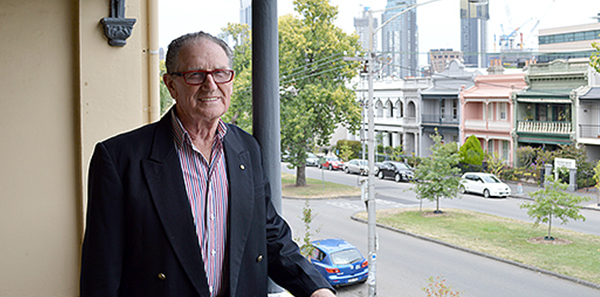1:30min

Emeritus Professor Barry Collin
______________________________
Shortly before his retirement, Emeritus Professor Barry Collin started a part-time job ‘to keep out of mischief’. Two decades later, he is celebrating 20 years as editor of Optometrists Association Clinical and Experimental Optometry.
Professor Collin is the journal’s second-longest serving editor after Dr WG Kett who held the role for 35 years, and having surpassed J Lloyd Hewett who was editor for 17 years. At 81 years of age, he shows no signs of slowing and enjoys his work.
‘It’s important that when people retire, they don’t just retire and die. It’s good to be doing something useful. I still edit every paper and push for decent expression and proper grammar. I am on a crusade to remove all but the very common abbreviations because they are confusing and can have multiple meanings,’ he said.
Professor Collin has carefully guided the journal’s growth in quality and quantity.
When he started, each issue was about 30 pages and featured roughly six papers. By 2013, the average issue was 96 pages, and only 84 of 280 papers submitted last year were published. ‘We have a high rejection rate of submitted papers because we set a high standard and papers have to be of potential interest to our readers,’ he said.
In September 1993, former Optometrists Association national CEO Joe Chakman asked Professor Collin if he would take the reins and his first journal as editor was published in March 1994. ‘I had just retired after 10 years as head of the School of Optometry and Visual Science at the University of New South Wales in 1992, so I thought: “why not?” When I retired from academia in 1995, it was an ideal part-time job to keep me out of mischief,’ Professor Collin recalled.
‘When I started, we didn’t have many papers and I was always calling people and asking them to write something. If we were short, I would occasionally go home and write a paper over the weekend.
‘Research and review papers were almost entirely from academics in Australian schools, but over the past few years we have published papers from authors in 37 countries.’
Professor Collin said the biggest change had been the internet, which has streamlined the process, enabling faster distribution and return of papers.
He used to receive papers submitted by postal mail, read them, select reviewers and mail copies of the papers to two referees. The papers were returned to him with the referees comments, which he then sent back to the authors seeking further revision before the authors submitted them again for further evaluation.
‘It was a long, slow process,’ he said. ‘Now we have eight associate editors who assist with this review process and who are very dedicated. I really appreciate the work they do, so they should share in the glory.’
The number of referees reviewing papers has also risen from 36 in 1993 to 181 last year. Due to ease of communication, they are located throughout the world.
An editorial board and an executive committee were appointed in 2000, with Professor Barry Cole as chairman. ‘Together we tried to raise the standard and encourage people to write more and better papers, particularly the top scientists and clinicians,’ Professor Collin said.
‘We had to fight to get the journal into PubMed but after three attempts in five years, we finally got there, which gave the journal some recognition and we later achieved an Impact Factor, which also helped encourage submissions.
‘The journal is well regarded among journals in the fields of optometry and ophthalmology but we are not at the top because in contrast to most other journals, we have two audiences: optometrists and vision scientists. We have a mix of research and reviews which attract citations, and clinical case reports which do not attract citations but are of interest to practitioners.’